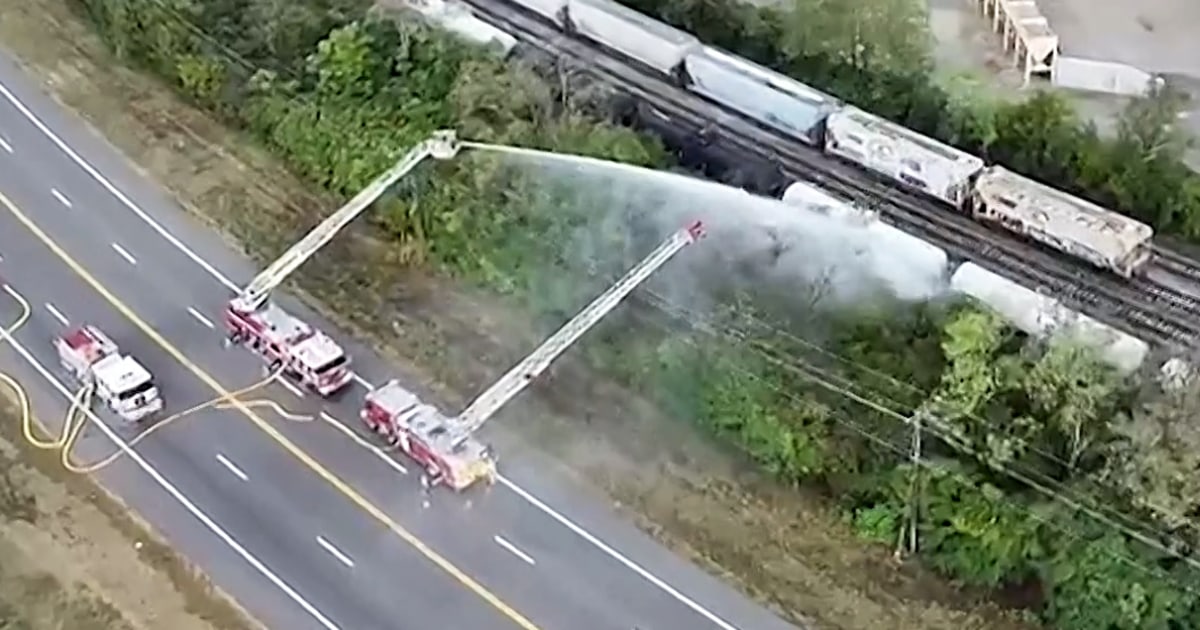An “all-clear” was declared Wednesday in a township near Cincinnati, a day after a chemical gas leak from a rail tanker prompted fears of an explosions and triggered hundreds of evacuations.
The evacuation orders that had been issued Tuesday within a half-mile radius of the incident in Whitewater Township — about 22 miles west-northwest of Cincinnati — have been lifted, and all roads have reopened, Little Miami Joint Fire and Rescue District Chief Mike Siefke said during a Wednesday evening news conference.
“All initial reports did not indicate any health concerns. There’s no explosion, no loss of property, and the water is safe to drink,” Siefke said.
Roughly 210 households in Whitewater Township had been under evacuation orders after colorless, odorless gas spewing from the tanker at State Route 128 and U.S. Route 50 was reported to first responders shortly after 1 p.m. Tuesday.
Authorities determined the chemical to be styrene, Siefke said. It’s used in the production of plastic, rubber, fiberglass and other structural materials.
By Wednesday morning, the rail car was “no longer venting,” Central Railroad of Indiana spokesperson John Keffer said. The car was “stabilized” and moved to its destination, Mike Miller of Central Railroad of Indiana said Wednesday night.

The investigation is ongoing, but the “probable cause” of the leak “was the additive stabilizer in the car became ineffective,” Miller told reporters earlier.
Styrene is an extremely reactive chemical. For safe transport, stabilizing additives are added to control it. The released styrene likely reacted with oxygen and other elements in the air.
“The first responders noticed the venting,” Miller added. “They were on site, we mobilized environmental contractors and we mobilized the scene.”
The chemical can irritate the respiratory system, cause headaches and disorient those who breathe it, according to the Centers for Disease Control and Prevention. Long-term exposure has been associated with some forms of cancer, the CDC says, but it’s not known as a direct killer.
Dr. Steve Feagins, the Hamilton County Public Health medical director, said during the Wednesday evening news conference that the amount of styrene exposure from the rail car leak was “not even close” to being enough to cause cancer.
“Any cancers that may have been associated with styrene, it’s more like an industrial accident where people are covered with fluids. And so the venting that occurred into the atmosphere isn’t even close to that type of exposure,” he said.
The threat for the community was that the rail car tank had been heating up could explode, Siefke said Tuesday. Firefighters doused the container with water in an attempt to reverse its temperature rise, he said.
Environmental officials were taking parts-per-million measurements in the community to determine the leak’s impact, he said. A representative for the U.S. Environmental Protection Agency said Wednesday night that the agency had been checking the air quality “all night long” starting at 7 p.m. Tuesday, and its tests showed that “the air quality is very good.”
“I am not aware of any hospitalizations related to this event,” Feagins said Wednesday.
Area public schools, the Three Rivers Local School District, shut down instruction early Tuesday and canceled instruction and all activities scheduled for Wednesday, according to the district website.
It wasn’t yet clear who owns the rail car or its cargo, officials said Tuesday night. A spokesperson for Central Railroad of Indiana said in a statement that it was cooperating with first responders.
State Route 128 and U.S. Route 50, which takes motorists from coast to coast, were shut down in both directions near the site but reopened Wednesday.


